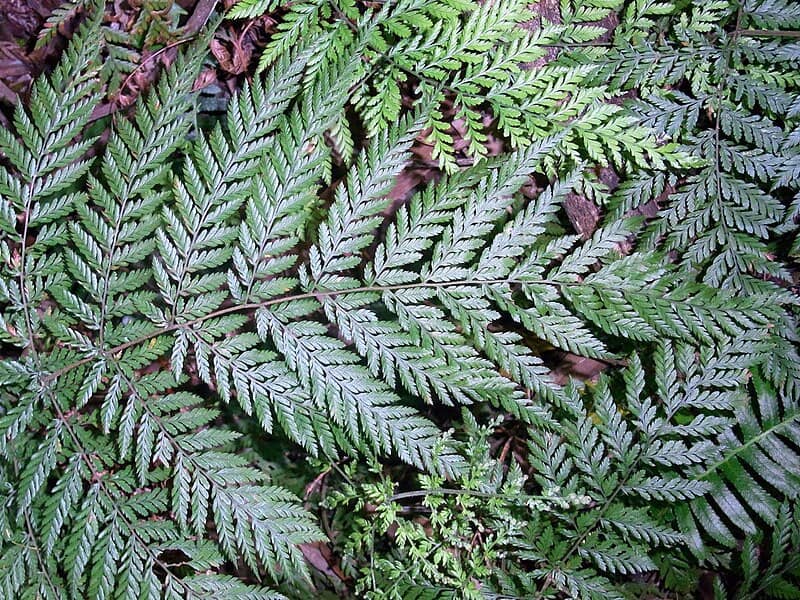Cacti are among the most fascinating plants found in the world’s deserts, each with unique adaptations to survive harsh environments. From the towering Saguaro to the creeping Devil Cactus, these resilient plants offer a stunning variety of shapes, sizes, and colors. Their ability to thrive in arid conditions makes them not only remarkable survivors but also vital components of desert ecosystems. In this list, we explore some of the most unique cacti found in deserts, highlighting their distinctive features and ecological importance.
Saguaro Cactus (Carnegiea gigantea)
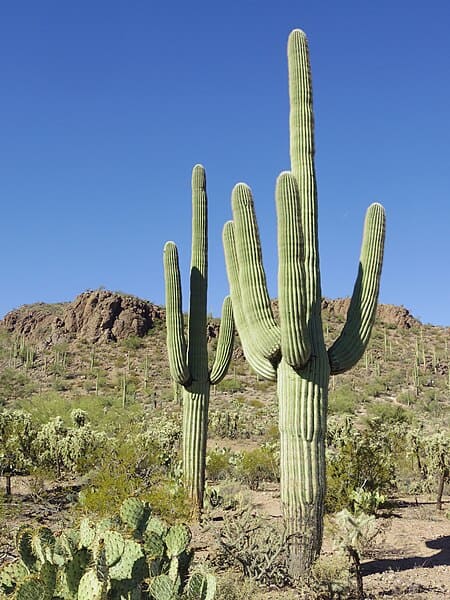
The Saguaro Cactus, native to the Sonoran Desert, is renowned for its towering height, often reaching over 40 feet. Its distinctive arms, which can number over 25, provide a habitat for desert birds. Known for its slow growth, this cactus can live for over 150 years. During the spring, it produces beautiful white flowers that bloom at night. Its pleated stem expands to store water, a vital adaptation to its arid environment.
Golden Barrel Cactus (Echinocactus grusonii)
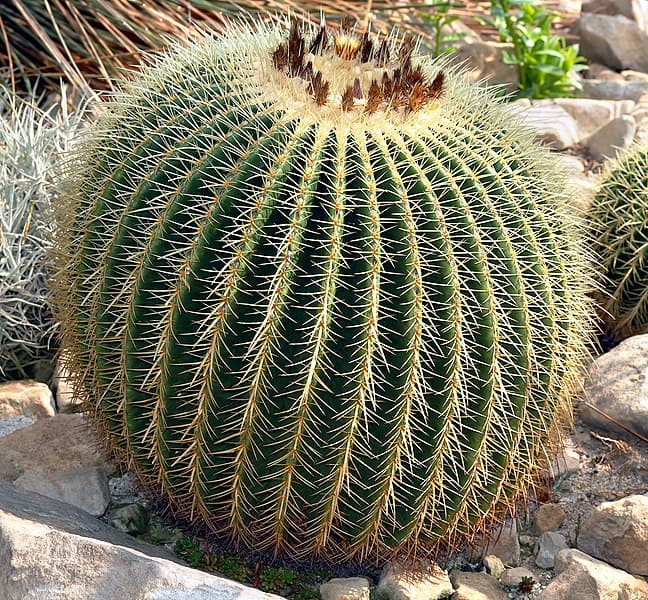
This striking cactus, with its globe-like shape, is covered in golden spines that glow in the desert sun. Native to central Mexico, the Golden Barrel Cactus can grow up to 3 feet in diameter. It blooms with bright yellow flowers in the summer, adding to its visual appeal. The cactus’s ribbed structure allows it to expand and contract based on water availability. Its spines provide protection from herbivores and excessive sunlight.
Organ Pipe Cactus (Stenocereus thurberi)
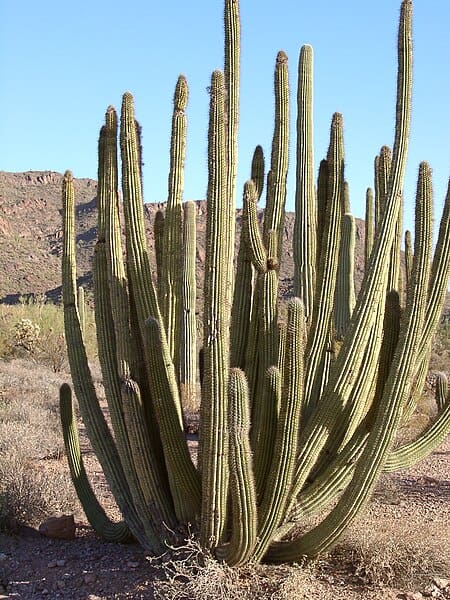
Found primarily in the Sonoran Desert, the Organ Pipe Cactus gets its name from its multiple tall, slender arms. It can grow up to 25 feet tall, with each arm producing clusters of white, night-blooming flowers. This cactus relies on bats for pollination, a unique ecological interaction. It thrives on rocky slopes, utilizing the well-draining soil to prevent waterlogging. The cactus’s fruit, called pitaya, is edible and highly prized.
Fishhook Barrel Cactus (Ferocactus wislizeni)
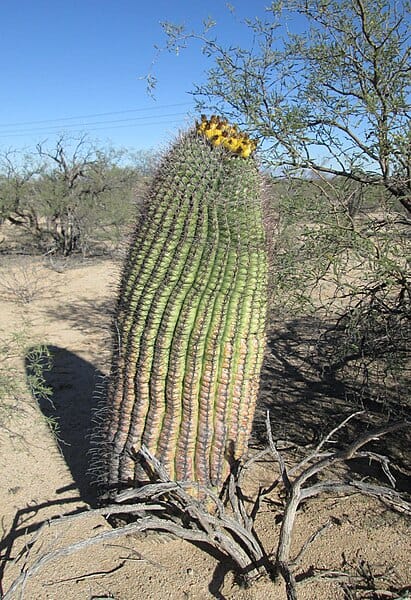
This cactus, recognizable by its hooked spines, is a common sight in the southwestern United States. It can grow up to 10 feet tall and has a cylindrical shape that helps conserve water. Bright yellow to orange flowers bloom in a ring at the top of the cactus during the summer. The spines not only deter predators but also help shade the cactus’s surface. Its pulp was traditionally used by Native Americans for food and water in emergencies.
Teddy Bear Cholla (Cylindropuntia bigelovii)
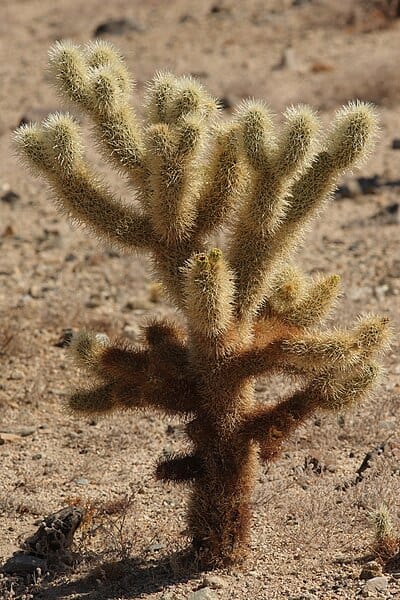
The Teddy Bear Cholla, also known as the jumping cholla, is notorious for its easily detached segments that stick to anything that brushes against them. This cactus has a dense covering of spines that give it a fuzzy appearance from a distance. It produces small greenish-yellow flowers in the spring, followed by fruit that rarely contains viable seeds. Found in the Sonoran Desert, it often forms dense stands called cholla gardens. Despite its prickly nature, it provides shelter for various desert animals.
Queen of the Night (Peniocereus greggii)
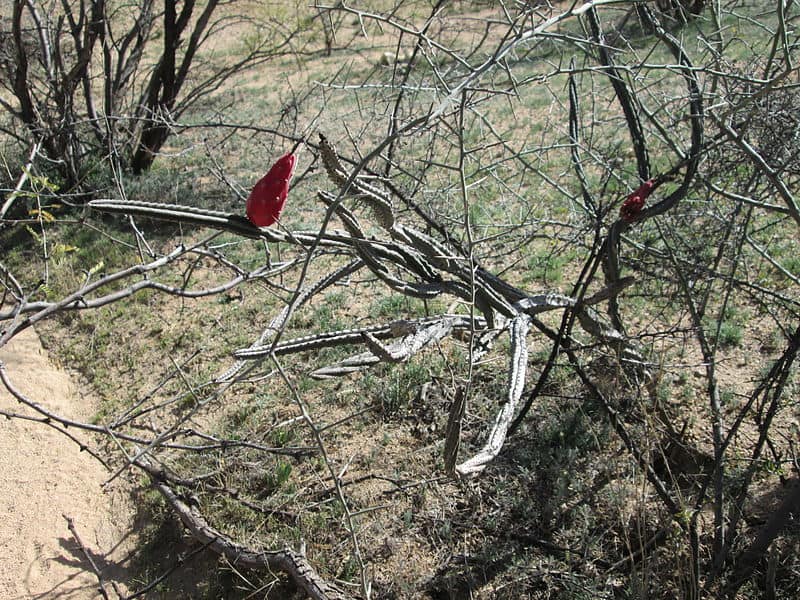
This cactus, often referred to as the Night-Blooming Cereus, is a master of disguise with its thin, twig-like stems that blend into the desert scrub. It remains almost invisible until it blooms, producing large, fragrant white flowers at night. These blooms attract nocturnal pollinators such as moths and bats. The cactus is found in the southwestern United States and northern Mexico, thriving in well-drained, rocky soils. Its tuberous roots store water, helping it survive long periods of drought.
Pincushion Cactus (Mammillaria spinosissima)
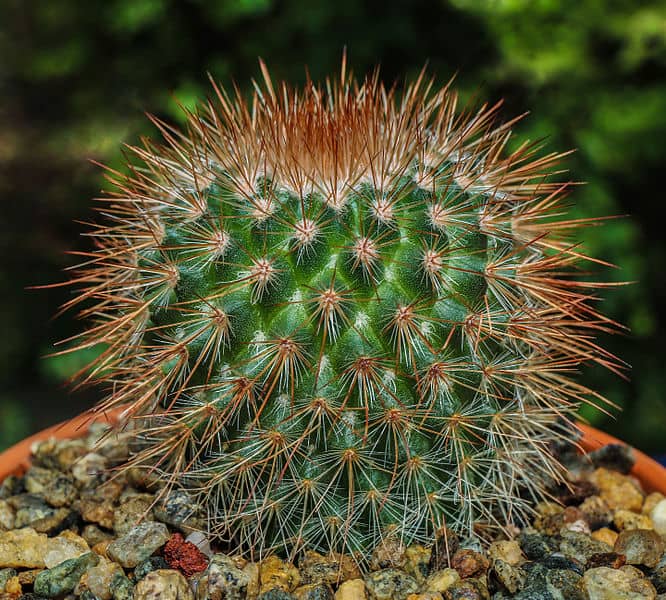
The Pincushion Cactus, native to Mexico, is small but resilient, forming clumps of cylindrical stems covered in dense spines. It blooms with vibrant pink or red flowers that emerge in a ring around the top of each stem in spring and summer. This cactus prefers rocky, well-drained soils and full sun. Its radial spines help shade its surface and reduce water loss. Despite its small size, it plays a crucial role in desert ecosystems by providing nectar for pollinators.
Prickly Pear Cactus (Opuntia humifusa)
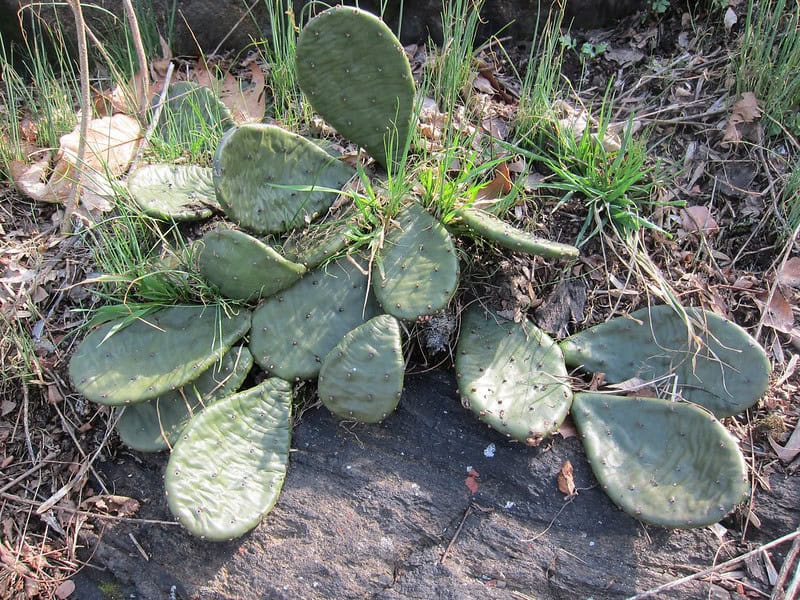
This widespread cactus, found across North and South America, is easily recognized by its flat, paddle-like segments. It produces bright yellow flowers in late spring, followed by edible red fruit called tunas. The pads are also edible and are used in various culinary dishes. The cactus’s segments can root and form new plants when detached, allowing it to spread efficiently. It serves as an important food source for wildlife in arid regions.
Old Man Cactus (Cephalocereus senilis)
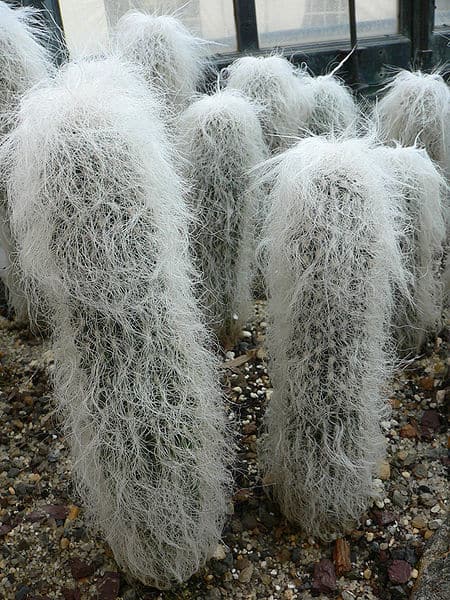
Native to Mexico, the Old Man Cactus is covered in long, white hair that protects it from intense sun and temperature fluctuations. This cactus can grow up to 50 feet tall, with its hair becoming more pronounced as it ages. It produces pink or yellow flowers that bloom at night, though this occurs rarely in cultivated specimens. The cactus’s hair also helps reduce water loss by trapping moisture. Its columnar shape and dense hair make it a striking addition to any desert landscape.
Cardón Cactus (Pachycereus pringlei)
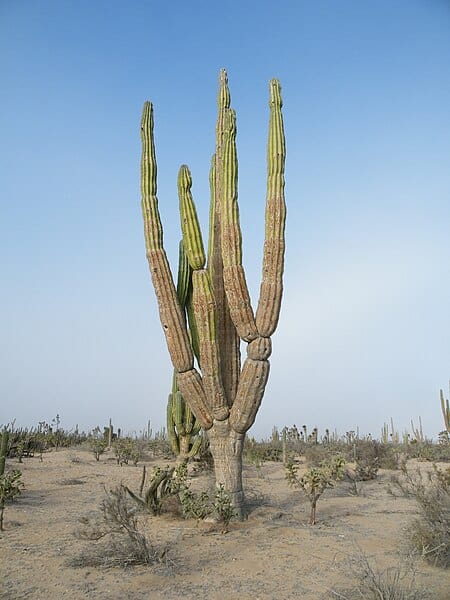
The Cardón Cactus, often mistaken for the Saguaro, is native to Baja California and is the largest cactus in the world, reaching heights of over 60 feet. It has multiple arms and produces large white flowers that bloom at night. The cactus’s wood is used by indigenous people for construction and tools. It thrives in rocky, well-drained soils and can live for over 300 years. Its massive size and longevity make it a keystone species in its habitat.
Living Rock Cactus (Ariocarpus fissuratus)
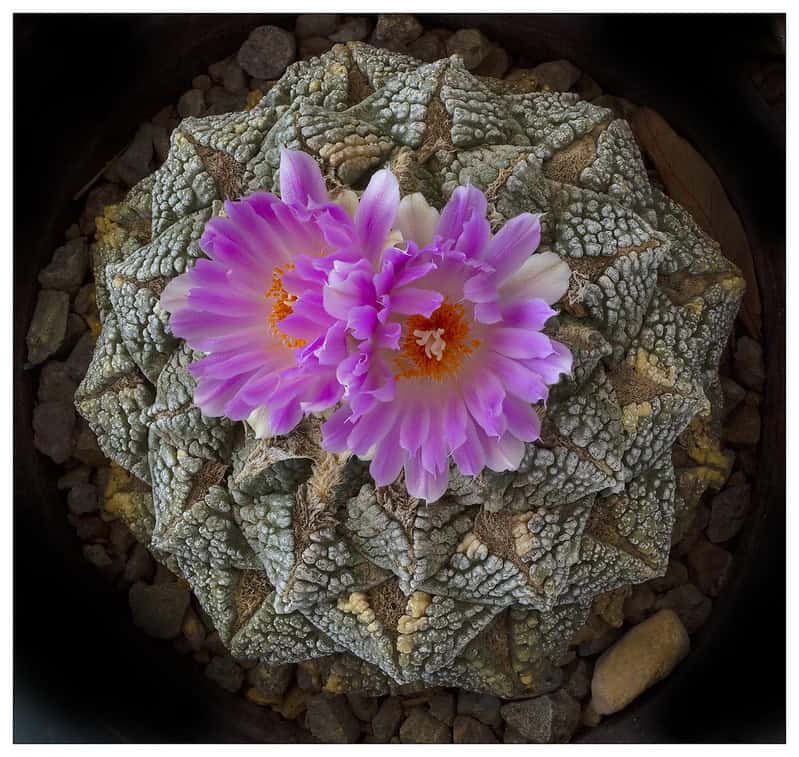
This unique cactus blends seamlessly into its surroundings, resembling the rocks it grows among in the Chihuahuan Desert. It has a flattened, spineless body with tubercles that produce woolly areoles. In the fall, it blooms with pink or magenta flowers, contrasting sharply with its rocky environment. The cactus has a large taproot that stores water and nutrients, enabling it to survive extreme droughts. Its camouflage and resilience make it a fascinating subject for botanists and cacti enthusiasts.
Beavertail Cactus (Opuntia basilaris)
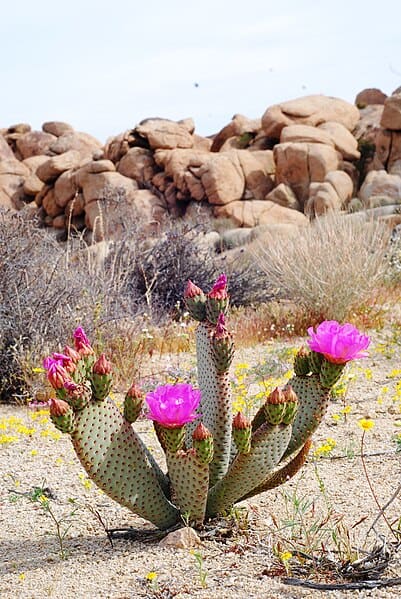
This cactus, found in the southwestern United States, is named for its flat, oval pads that resemble a beaver’s tail. It blooms in the spring with stunning magenta flowers that attract bees and other pollinators. The pads are covered in tiny, barbed spines called glochids that can easily detach and irritate the skin. It thrives in sandy, well-drained soils and full sun. The Beavertail Cactus is a hardy species that provides food and habitat for desert wildlife.
Senita Cactus (Pachycereus schottii)
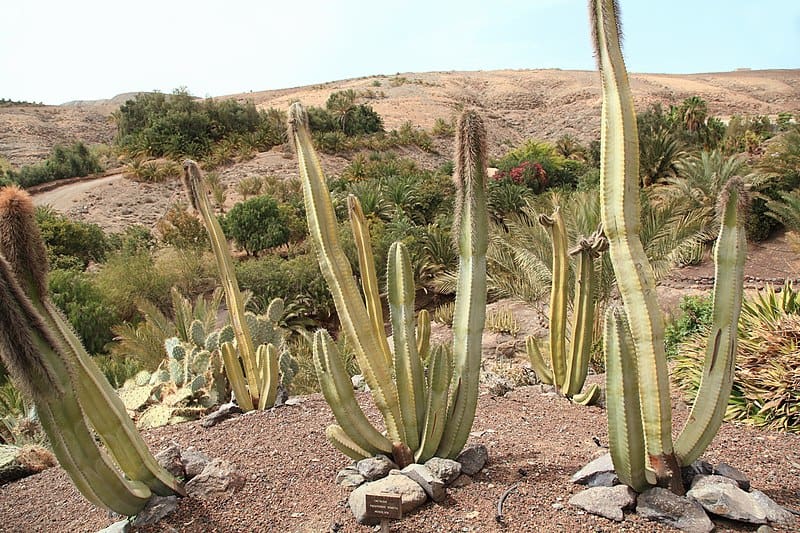
Found in the Sonoran Desert, the Senita Cactus has multiple tall, slender stems that can grow up to 15 feet high. It is covered in dense, grayish spines that give it a fuzzy appearance. The cactus produces small, pink flowers that bloom at night, relying on moths for pollination. Its fruit is edible and was traditionally used by indigenous peoples for food. The Senita Cactus is an important part of its ecosystem, providing habitat and resources for desert wildlife.
Creeping Devil Cactus (Stenocereus eruca)
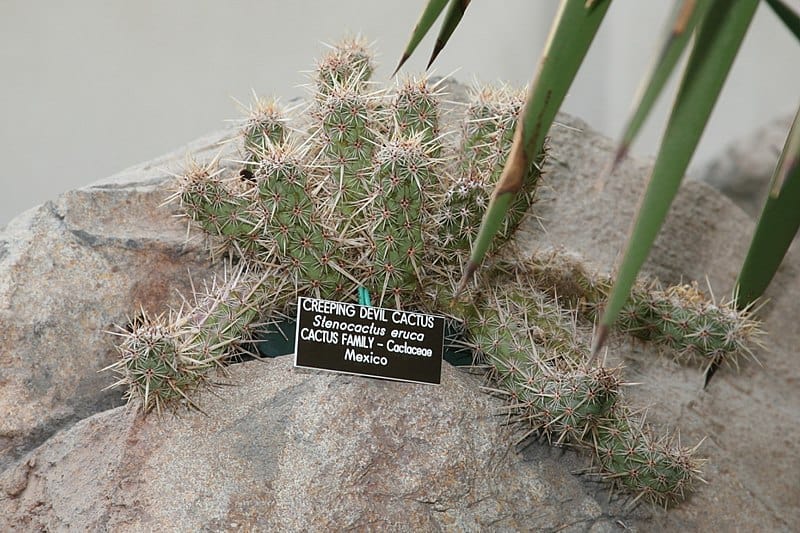
This unusual cactus, native to Baja California, grows horizontally along the ground, forming dense, creeping colonies. It has long, cylindrical stems covered in spines and produces small, nocturnal white flowers. The cactus moves slowly over time as new segments grow and older ones die off, giving it the appearance of crawling across the desert. Its growth habit helps it avoid herbivores and maximize water absorption. The Creeping Devil Cactus is a unique example of adaptation to a harsh environment.
Turk’s Cap Cactus (Melocactus matanzanus)
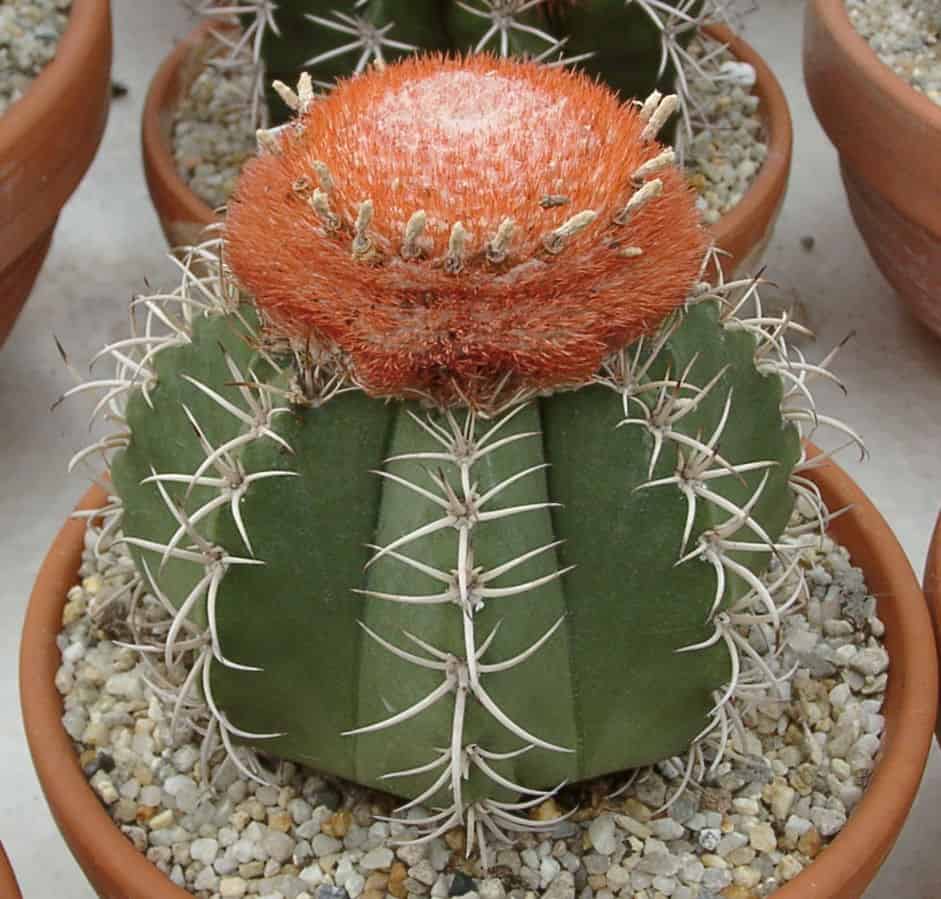
This cactus, native to Cuba, is easily recognized by its rounded shape topped with a red, cap-like structure called a cephalium. It produces small, pink flowers that emerge from the cephalium and are followed by edible red fruit. The cactus is slow-growing and prefers rocky, well-drained soils. Its cephalium serves as a reproductive structure, housing the cactus’s flowers and fruit. The Turk’s Cap Cactus is a striking and unusual addition to any cactus collection.
Bishop’s Cap Cactus (Astrophytum myriostigma)
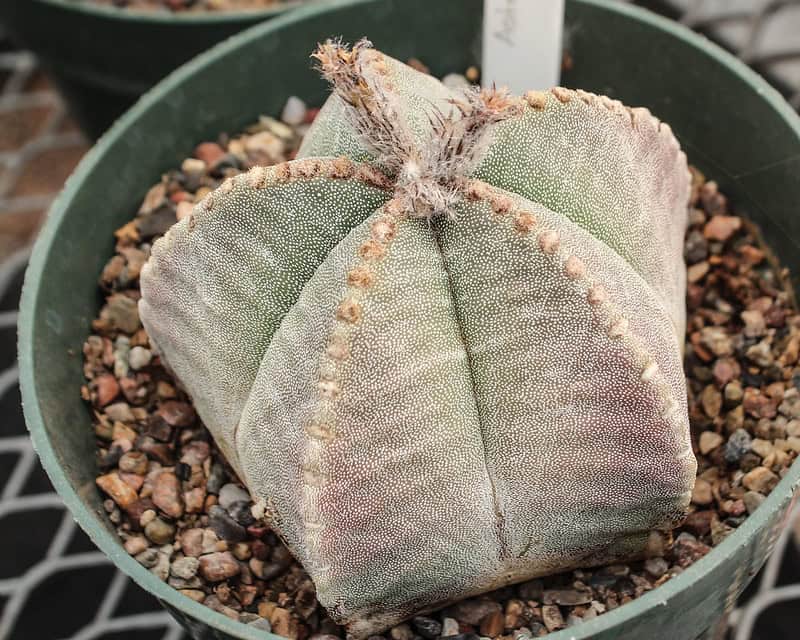
This star-shaped cactus, native to Mexico, has five distinct ribs that give it a unique appearance. It is covered in small, white scales that help reflect sunlight and reduce water loss. The cactus produces large, yellow flowers that bloom at the top of its stem. It thrives in rocky, well-drained soils and full sun. The Bishop’s Cap Cactus is prized for its distinctive shape and low-maintenance requirements.
Paper Spine Cactus (Tephrocactus articulatus)
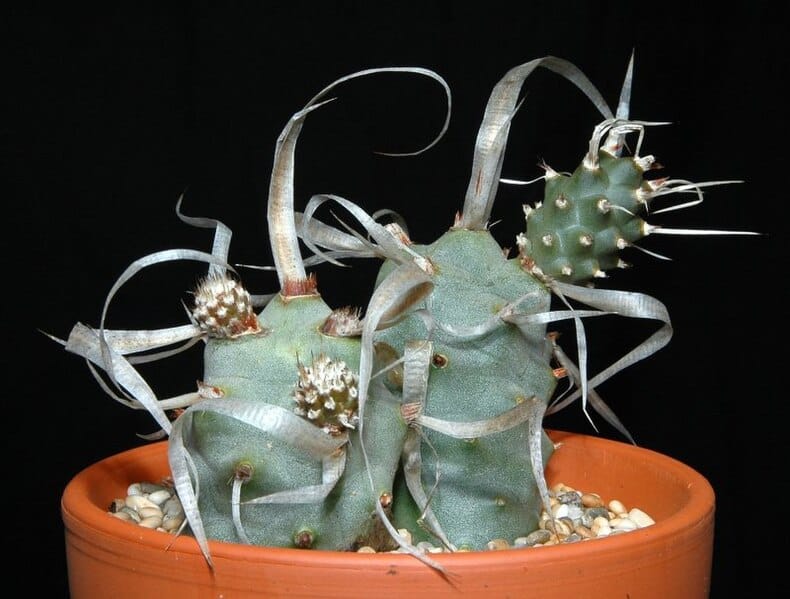
The Paper Spine Cactus, found in Argentina, has segmented stems covered in delicate, papery spines. It produces small, white flowers that bloom in the spring and summer. The cactus’s segments can easily detach and root to form new plants, allowing it to spread efficiently. Its spines provide protection from herbivores and help reduce water loss. The Paper Spine Cactus is a fascinating example of adaptation to a challenging environment.
Chin Cactus (Gymnocalycium mihanovichii)

This small cactus, native to South America, is known for its round, ribbed body and bright, colorful flowers. It prefers well-drained soils and partial shade, making it well-suited for indoor cultivation. The cactus produces pink, white, or yellow flowers that bloom in the spring and summer. Its name comes from the Greek words for “naked calyx,” referring to its flower structure. The Chin Cactus is a popular choice for collectors due to its vibrant flowers and compact size.
Claret Cup Cactus (Echinocereus triglochidiatus)
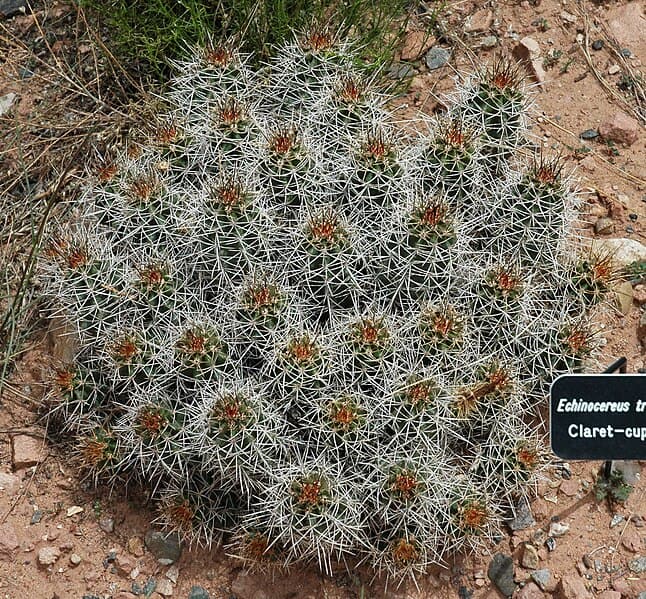
The Claret Cup Cactus, native to the southwestern United States, is known for its stunning, claret-colored flowers that bloom in the spring. It has cylindrical stems covered in spines and often forms large clumps. The cactus thrives in rocky, well-drained soils and full sun. Its flowers are an important nectar source for hummingbirds and other pollinators. The Claret Cup Cactus is a beautiful and resilient addition to any desert landscape.
This article originally appeared on Rarest.org.
More From Rarest.Org
Collecting antique weapons offers a unique glimpse into history, showcasing the craftsmanship, artistry, and stories of bygone eras. These weapons, ranging from swords and daggers to axes and sabers, hold immense historical value and appeal to collectors for their rarity and significance. Read more.
Ferns are among the oldest plants on Earth, thriving in a variety of habitats, including some of the most secluded and undisturbed areas. While many ferns are familiar sights in gardens and forests, there are numerous uncommon species that flourish in hidden corners of the world. Read more.
Asia’s luxury real estate market is thriving, offering some of the most desirable investment opportunities worldwide. From bustling metropolises like Tokyo and Singapore to emerging hubs like Phnom Penh and Ho Chi Minh City, these cities provide a mix of stability, growth potential, and high returns. Read more.


